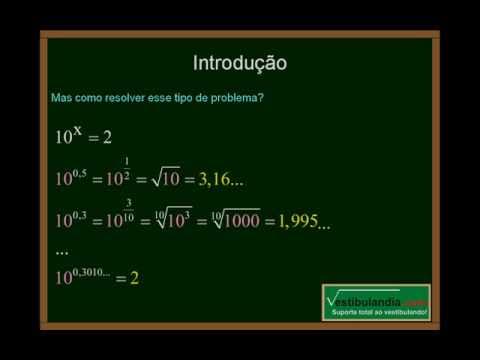Recurrence Relation | Solution of Recurrence Relation | Discrete Mathematics by Gp sir
Summary
TLDRThe video script is an educational tutorial by a student named Rajendra Purohit, who discusses the concept of recursion and its applications in solving difference equations. He introduces the Fibonacci sequence as an example of a recursive relationship and explains how to derive and solve linear differential equations with constant coefficients. The tutorial delves into identifying the order of a recursive relationship, solving for its characteristic equation, and finding the general solution. It also covers methods to solve linear difference equations with constant coefficients, emphasizing the importance of understanding the roots and their implications on the solution's form. The script is aimed at engineering mathematics students and enthusiasts interested in recursion and its mathematical applications.
Takeaways
- 📚 The video is an educational content by a student named Rajendra Purohit, who discusses the concept of 'recurrence relations' and 'difference equations'.
- 🔍 Rajendra explains how to derive and solve difference equations, which are equations defining a sequence where each term is defined as a function of previous terms.
- 🔢 The video covers the Fibonacci sequence as an example of a recurrence relation, illustrating how each term is the sum of the two preceding ones.
- 📐 It discusses the order of recurrence relations, which is the number of previous terms that define the current term, and how to determine it from the given relation.
- 📈 Rajendra teaches how to solve linear recurrence relations with constant coefficients, which are a type of recurrence relation where the coefficients do not change between terms.
- 📝 The script explains the process of finding the characteristic equation from a recurrence relation and solving it to find the roots, which are crucial for determining the general solution.
- 🧮 It details the method of finding the particular solution to a recurrence relation by using the roots of the characteristic equation and forming a linear combination of terms.
- 📉 The video also touches on the concept of non-linear recurrence relations and how they differ from linear ones, leading to potentially more complex solutions.
- 📚 Rajendra provides examples and step-by-step solutions to various types of recurrence relations, including those with non-repeating and complex roots.
- 🔑 The importance of understanding the form of the solution (denoted as 'p' in the script) is emphasized, as it helps in identifying the correct terms to substitute into the difference equation.
- 👨🏫 The video concludes with an invitation for viewers to subscribe to the channel for more educational content on mathematics and competitive exam preparation.
Q & A
What is the main topic of the video?
-The main topic of the video is 'Recursion', explaining what a recursive relationship is and how to solve the difference equations that arise from it.
What are the types of relationships discussed in the video?
-The video discusses linear and non-linear recursive relationships, focusing on how to identify and solve the difference equations associated with them.
What is a Fibonacci sequence according to the video?
-The Fibonacci sequence, as mentioned in the video, is a series where each term is the sum of the two preceding terms, starting from 1.
What is the order of a recursive relationship?
-The order of a recursive relationship is the difference in the indices of the terms involved in the relationship, which is typically denoted by 'n'.
How does the video define a linear recursive relationship?
-A linear recursive relationship is defined in the video as one where the highest power of the term does not exceed 1, and there are no products of different terms.
What is a difference equation as per the video?
-A difference equation, according to the video, is an equation derived from a recursive relationship that can be solved to find the values of the sequence.
How are the roots of a quadratic equation used in the video to solve a recursive relationship?
-The roots of a quadratic equation are used to form the general solution of a recursive relationship, which can then be simplified to find the specific terms of the sequence.
What is the role of constants in a recursive relationship?
-Constants in a recursive relationship are the coefficients that, when determined, help in solving the difference equation and finding the sequence's terms.
How does the video explain solving a difference equation with constant coefficients?
-The video explains that for a difference equation with constant coefficients, one must first find the characteristic equation's roots, then use these roots to form the general solution, and finally apply initial conditions to find the specific solution.
What are the steps to solve a recursive relationship with a constant term as shown in the video?
-The steps include identifying the recursive relationship, forming the characteristic equation, finding its roots, determining the constants using initial conditions, and then substituting these values back into the general form to get the specific solution.
Outlines

このセクションは有料ユーザー限定です。 アクセスするには、アップグレードをお願いします。
今すぐアップグレードMindmap

このセクションは有料ユーザー限定です。 アクセスするには、アップグレードをお願いします。
今すぐアップグレードKeywords

このセクションは有料ユーザー限定です。 アクセスするには、アップグレードをお願いします。
今すぐアップグレードHighlights

このセクションは有料ユーザー限定です。 アクセスするには、アップグレードをお願いします。
今すぐアップグレードTranscripts

このセクションは有料ユーザー限定です。 アクセスするには、アップグレードをお願いします。
今すぐアップグレード関連動画をさらに表示

METODE BEDA HINGGA || METODE NUMERIK UNTUK MASALAH NILAI AWAL (BAGIAN II)

Matemática - Aula 13 - Logaritmo - Parte 1

Rank of Matrix Using Transformation | Normal Form | in Hindi by GP Sir

Rekursi

10th Science 1| Chapter 03 | Chemical Reaction & Equation | Lecture 1 | maharashtra board |

Memenuhi Kebutuhan Murid dengan Diferensiasi Proses
5.0 / 5 (0 votes)
